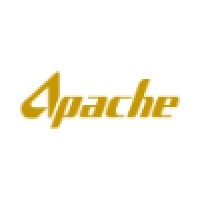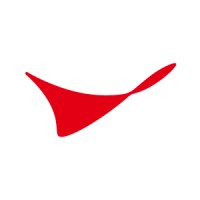
Apache Corporation Company Cyber Security Posture
apacorp.comOur primary product is energy, and where there is reliable, affordable energy, people are healthier, have access to better education, and are given greater opportunities to elevate their families to higher standards of living. Apache Corporation is a subsidiary of APA Corporation.
Apache Corporation Company Details
apache-corporation
2987 employees
253988.0
211
Oil and Gas
apacorp.com
Scan still pending
APA_1855314
In-progress
Between 800 and 900
This score is AI-generated and less favored by cyber insurers, who prefer the TPRM score.
 Apache Corporation Global Score
Apache Corporation Global Score.png)

Apache Corporation Company Scoring based on AI Models
| Model Name | Date | Description | Current Score Difference | Score |
|---|---|---|---|---|
| AVERAGE-Industry | 03-12-2025 | This score represents the average cybersecurity rating of companies already scanned within the same industry. It provides a benchmark to compare an individual company's security posture against its industry peers. | N/A | Between 800 and 900 |
Apache Corporation Company Cyber Security News & History
| Entity | Type | Severity | Impact | Seen | Url ID | Details | View |
|---|---|---|---|---|---|---|---|
| Apache | Vulnerability | 25 | 1 | 5/2025 | APA136052625 | Link | |
Rankiteo Explanation : Attack without any consequencesDescription: A critical path equivalence vulnerability in Apache Tomcat, designated CVE-2025-24813, has been actively exploited in the wild following the public release of proof-of-concept exploit code. The vulnerability, disclosed on March 10, 2025, enables unauthenticated remote code execution under specific server configurations and affects millions of Java-based web applications worldwide. Security researchers have confirmed active exploitation attempts shortly after the vulnerability’s disclosure, with the Cybersecurity and Infrastructure Security Agency (CISA) adding it to the Known Exploited Vulnerabilities catalog on April 1, 2025. | |||||||
| Apache2 | Vulnerability | 100 | 5 | 6/2025 | APA813061325 | Link | |
Rankiteo Explanation : Attack threatening the organization's existenceDescription: A critical zero-day vulnerability (CVE-2025-33053) in WebDAV implementations allows remote code execution. Advanced persistent threat (APT) groups have actively exploited this vulnerability in targeted campaigns against enterprise networks. The exploit uses malicious URL shortcut files combined with WebDAV server configurations to gain initial access and move laterally within compromised environments. This vulnerability is particularly effective against environments running Apache2 with WebDAV modules enabled, often lacking adequate access controls. Security researchers have observed APT groups distributing these weaponized shortcuts through phishing campaigns disguised as legitimate business documents. | |||||||
Apache Corporation Company Subsidiaries

Our primary product is energy, and where there is reliable, affordable energy, people are healthier, have access to better education, and are given greater opportunities to elevate their families to higher standards of living. Apache Corporation is a subsidiary of APA Corporation.
Access Data Using Our API

Get company history
.png)
Apache Corporation Cyber Security News
295 Malicious IPs Launch Coordinated Brute-Force Attacks on Apache Tomcat Manager
Threat intelligence firm GreyNoise has warned of a "coordinated brute-force activity" targeting Apache Tomcat Manager interfaces.
Top 10 Tech Internships Offered in Midland
Midland, Texas, offers top tech internships with major energy companies like XTO Energy and Apache Corporation.
Hackers exploit critical file upload flaw in Apache Struts framework
None
APA Corporation appoints new board member
APA Corporation (NASDAQ:APA), an energy company engaged in the exploration and production of oil and natural gas, has announced the addition of Kenneth M. ...
Cybersecurity Weekly Recap: Key Updates on Attacks, Vulnerabilities, & Data Breaches
Welcome to this week's Cybersecurity Newsletter, providing you with the latest updates and essential insights from the rapidly evolving ...
Cyble Sensors Uncover Attacks on Apache OFBiz & Palo Alto
The vulnerability occurs when a user operates a URI call without authorization, which could lead to a Server-Side Request Forgery (SSRF) attack.
Dirty DAG: New Vulnerabilities in Azure Data Factory’s Apache Airflow Integration
These vulnerabilities could enable attackers to escape from their pods, gain unauthorized administrative control over clusters and access ...
Apache Tomcat Vulnerability Actively Exploited Just 30 Hours After Public Disclosure
A recently disclosed security flaw impacting Apache Tomcat has come under active exploitation in the wild following the release of a public ...
In The Increasingly High-Tech Oil Business, Cyber Security Is Becoming Essential
More and more companies are putting their data on the “cloud” and going digital in other ways. It's good for the bottom line – but is it safe?

Apache Corporation Similar Companies

Shell
Shell is a global group of energy and petrochemical companies, employing 103,000 people and with operations in more than 70 countries. We serve more than 1 million commercial and industrial customers, and around 33 million customers daily at more than 47,000 Shell-branded retail service stations. O

Koch Engineered Solutions
Koch Engineered Solutions (KES) provides uniquely engineered solutions in construction; mass and heat transfer; combustion and emissions controls; filtration; separation; materials applications; automation and actuation. KES is located in Wichita, Kansas, and is a subsidiary of Koch Industries, one

PDVSA ARGENTINA
Petróleos de Venezuela S.A. es la corporación estatal de la República Bolivariana de Venezuela que se encarga de la exploración, producción, manufactura, transporte y mercadeo de los hidrocarburos, de manera eficiente, rentable, segura, transparente y comprometida con la protección ambiental; con el

ConocoPhillips
We are a global oil and gas company tasked with an important job—to safely find and deliver energy for the world. We’re experts in what we do—from the well site to the office. Across our operations and activities in 13 countries, we never forget our responsibility to be a great neighbor, and a gre

Suncor
In 1967, we pioneered commercial development of Canada's oil sands – one of the largest petroleum resource basins in the world. Since then, Suncor has grown to become a globally competitive integrated energy company with a balanced portfolio of high-quality assets, a strong balance sheet and signifi

Kuwait Petroleum Corporation
Kuwait Petroleum Corporation is the State of Kuwait's state-owned entity responsible for Kuwait's hydrocarbon interests throughout the world. As a leader in the global energy business, we contribute to meeting the world's essential oil and gas requirements by exploring for, producing, refining, tra

Frequently Asked Questions
Explore insights on cybersecurity incidents, risk posture, and Rankiteo's assessments.
Apache Corporation CyberSecurity History Information
How many cyber incidents has Apache Corporation faced?
Total Incidents: According to Rankiteo, Apache Corporation has faced 2 incidents in the past.
What types of cybersecurity incidents have occurred at Apache Corporation?
Incident Types: The types of cybersecurity incidents that have occurred incidents .
Additional Questions
What Do We Measure?
















Every week, Rankiteo analyzes billions of signals to give organizations a sharper, faster view of emerging risks. With deeper, more actionable intelligence at their fingertips, security teams can outpace threat actors, respond instantly to Zero-Day attacks, and dramatically shrink their risk exposure window.
These are some of the factors we use to calculate the overall score:
Identify exposed access points, detect misconfigured SSL certificates, and uncover vulnerabilities across the network infrastructure.
Gain visibility into the software components used within an organization to detect vulnerabilities, manage risk, and ensure supply chain security.
Monitor and manage all IT assets and their configurations to ensure accurate, real-time visibility across the company's technology environment.
Leverage real-time insights on active threats, malware campaigns, and emerging vulnerabilities to proactively defend against evolving cyberattacks.




